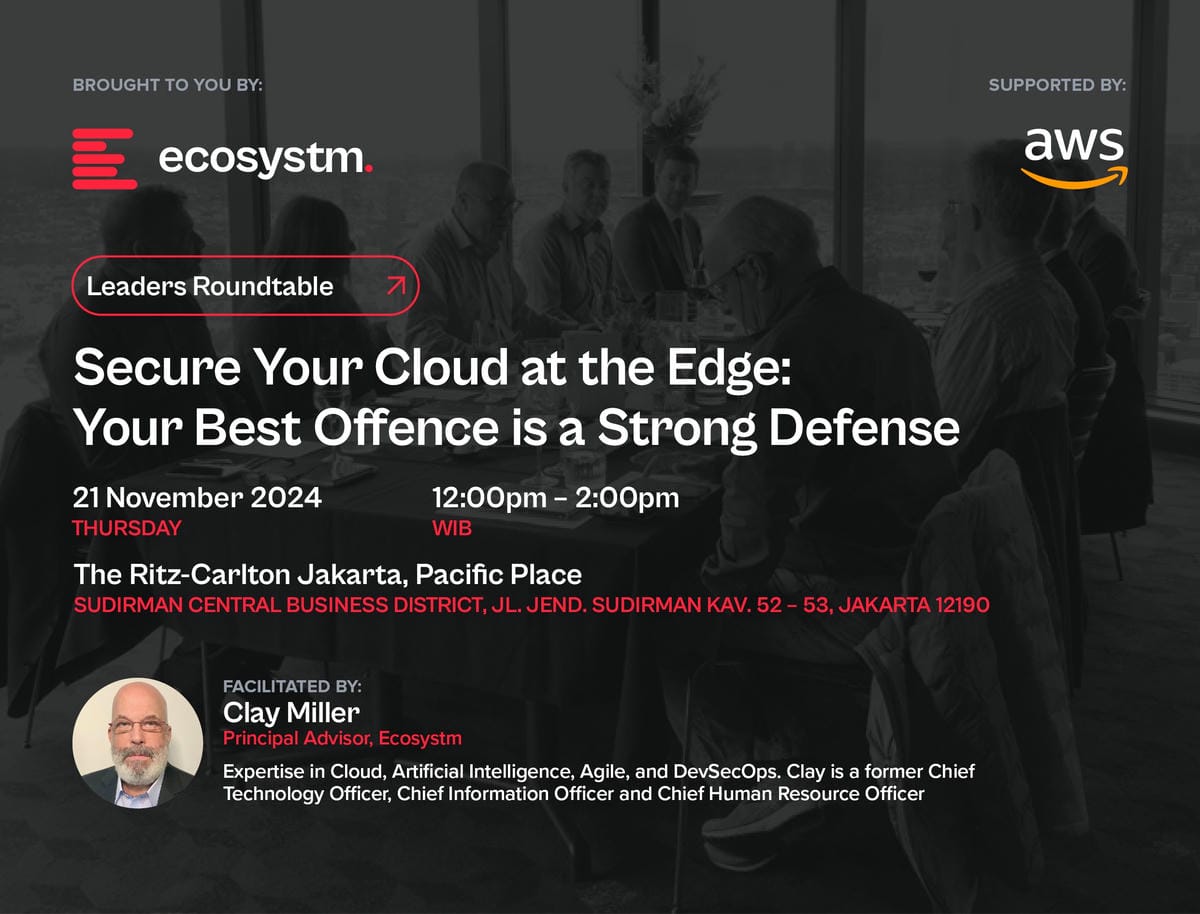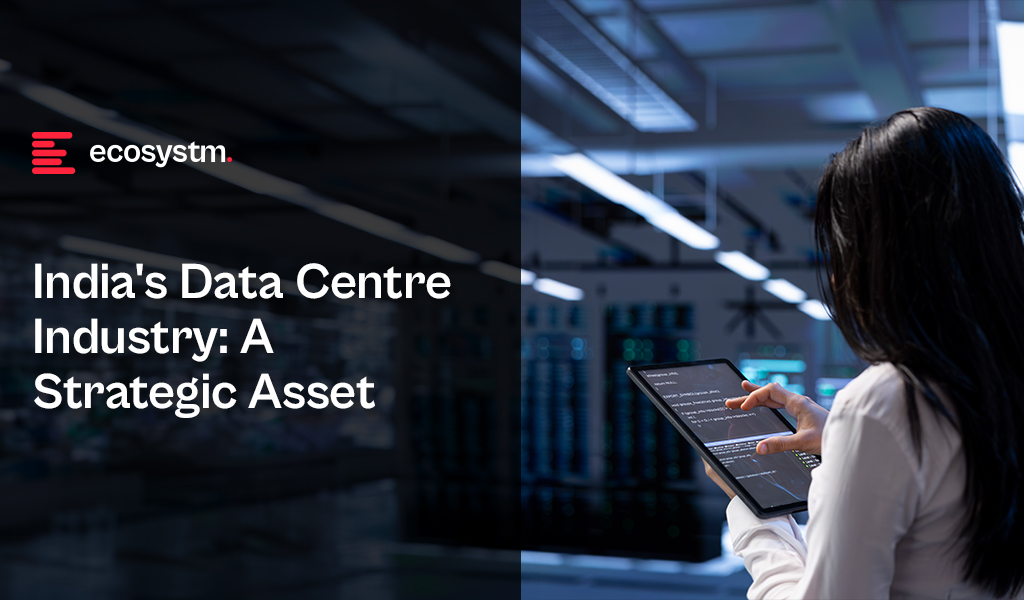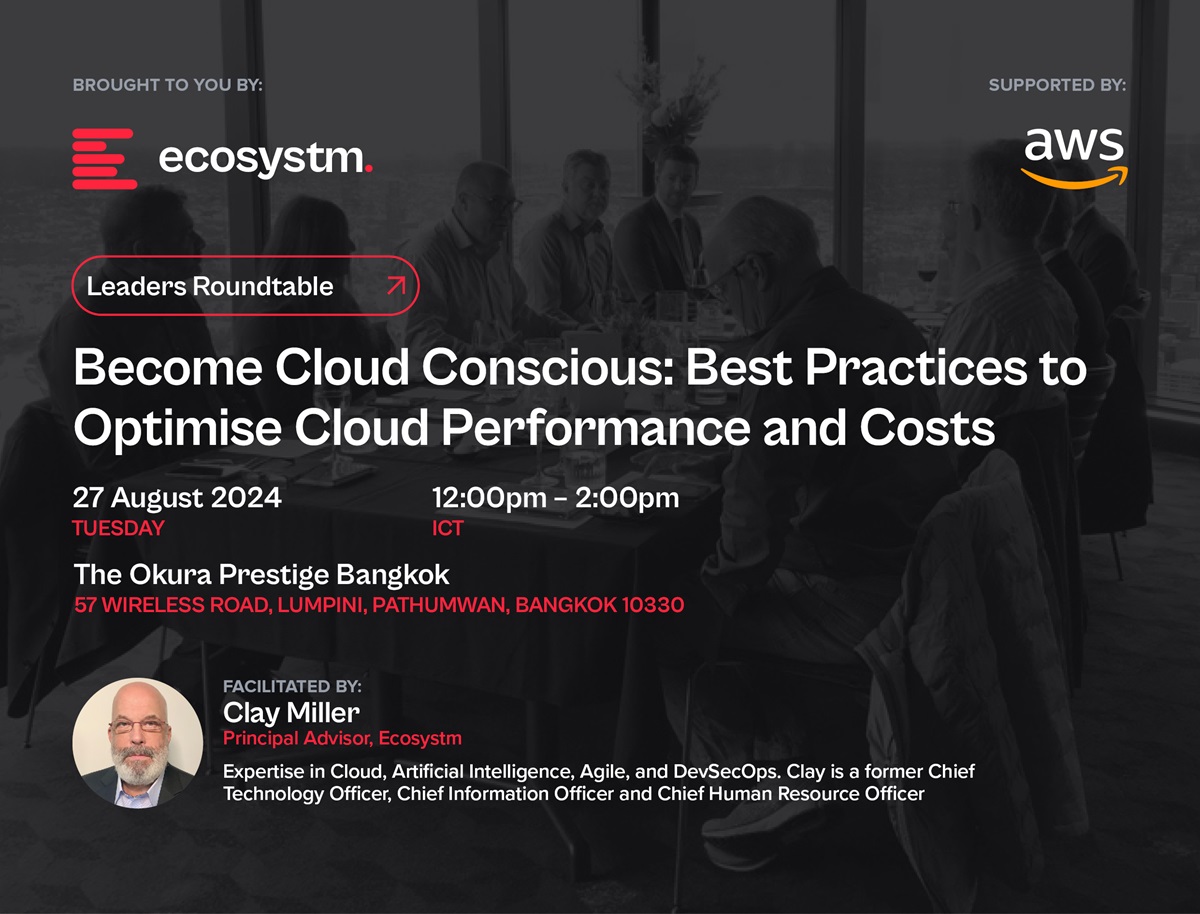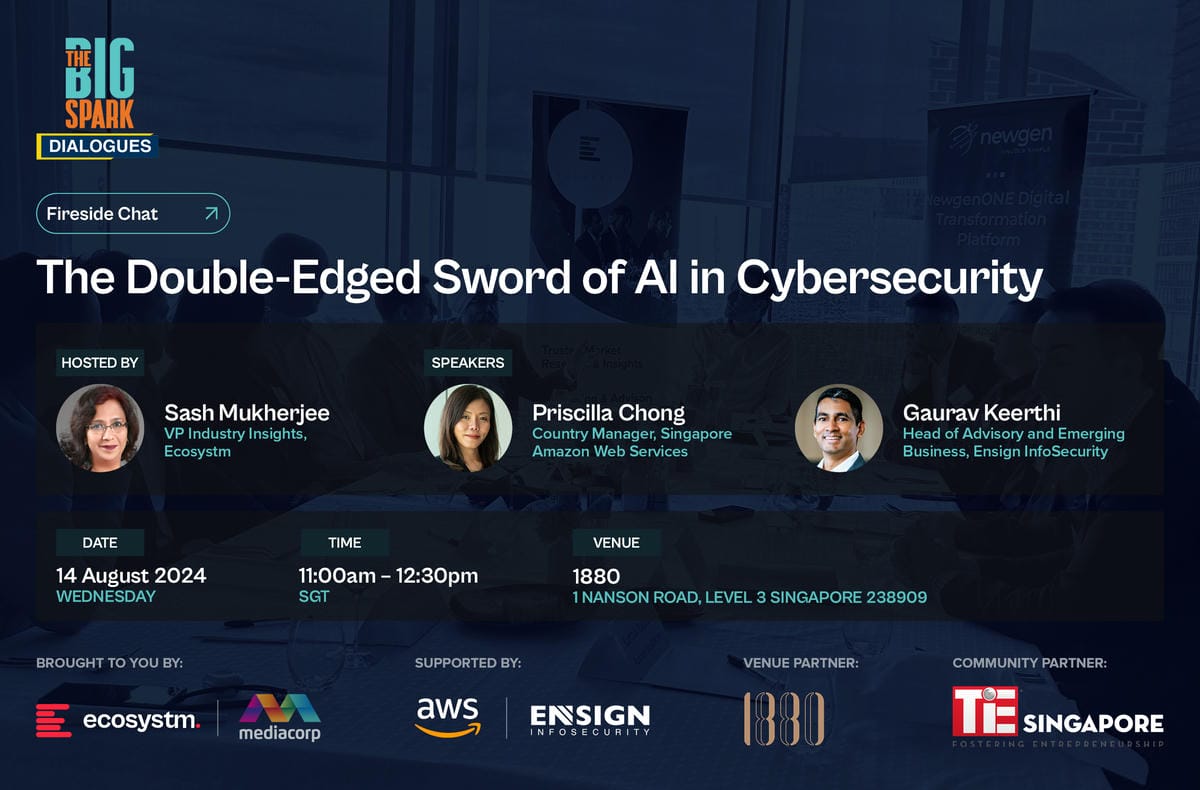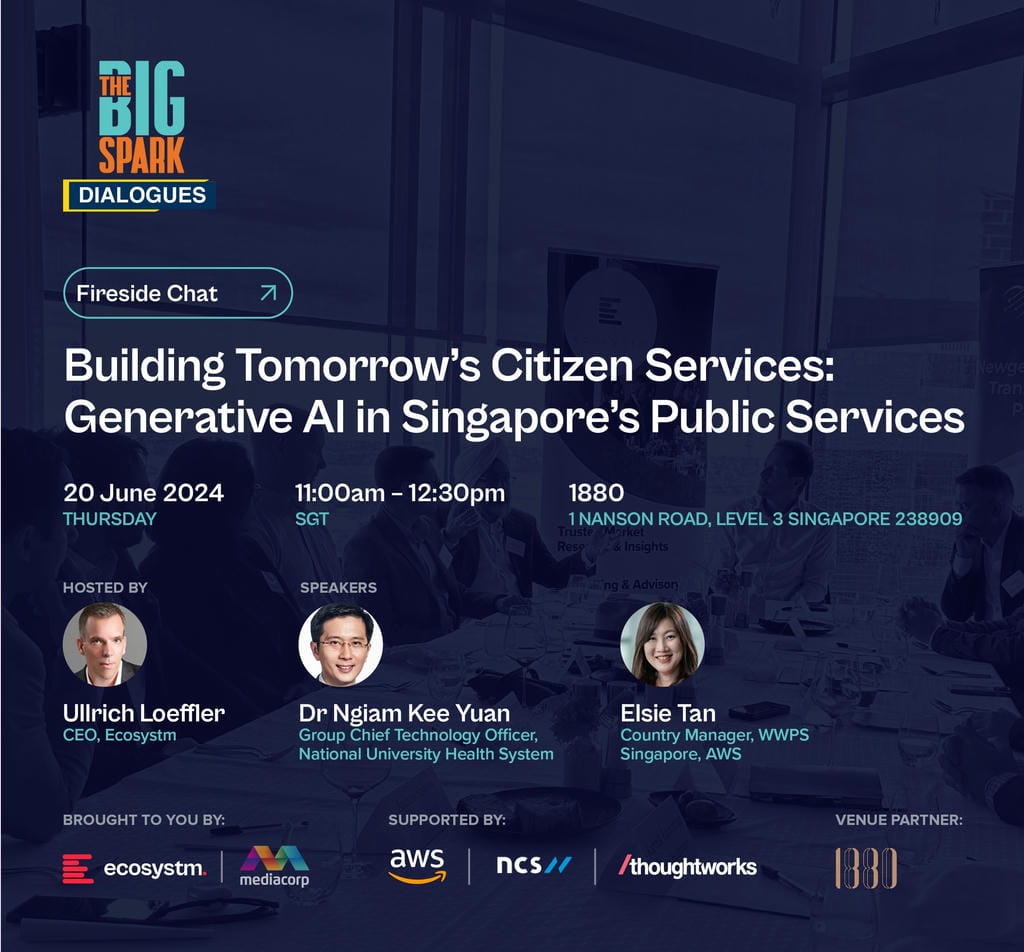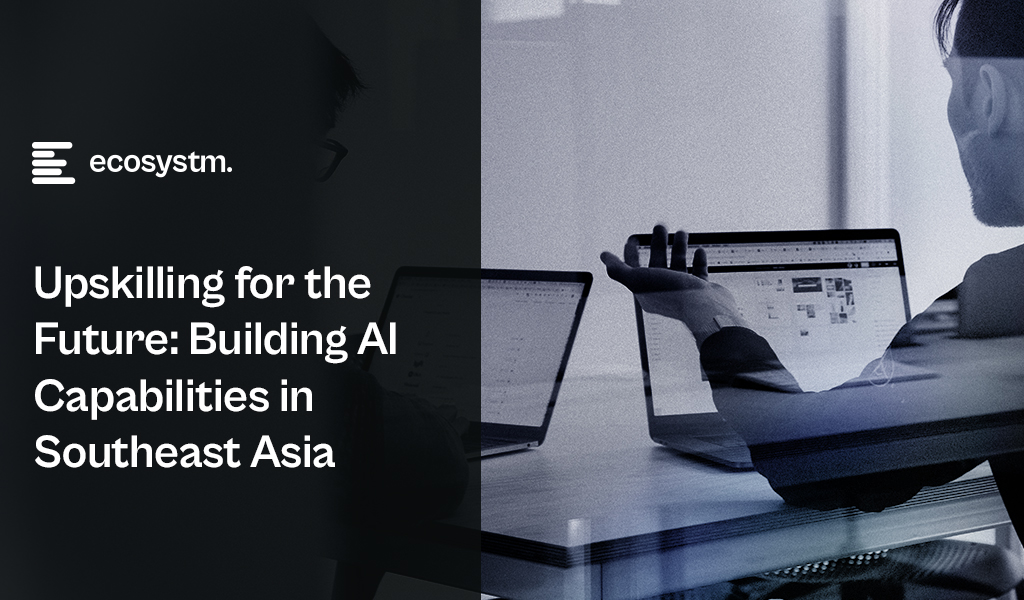Indonesia’s vast, diverse population and scattered islands create a unique landscape for AI adoption. Across sectors – from healthcare to logistics and banking to public services – leaders view AI not just as a tool for efficiency but as a means to expand reach, build resilience, and elevate citizen experience. With AI expected to add up to 12% of Indonesia’s GDP by 2030, it’s poised to be a core engine of growth.
Yet, ambition isn’t enough. While AI interest is high, execution is patchy. Many organisations remain stuck in isolated pilots or siloed experiments. Those scaling quickly face familiar hurdles: fragmented infrastructure, talent gaps, integration issues, and a lack of unified strategy and governance.
Ecosystm gathered insights and identified key challenges from senior tech leaders during a series of roundtables we moderated in Jakarta. The conversations revealed a clear picture of where momentum is building – and where obstacles continue to slow progress. From these discussions, several key themes emerged that highlight both opportunities and ongoing barriers in the country’s digital journey.
Theme 1. Digital Natives are Accelerating Innovation; But Need Scalable Guardrails
Indonesia’s digital-first companies – especially in fintech, logistics tech, and media streaming – are rapidly building on AI and cloud-native foundations. Players like GoTo, Dana, Jenius, and Vidio are raising the bar not only in customer experience but also in scaling technology across a mobile-first nation. Their use of AI for customer support, real-time fraud detection, biometric eKYC, and smart content delivery highlights the agility of digital-native models. This innovation is particularly concentrated in Jakarta and Bandung, where vibrant startup ecosystems and rich talent pools drive fast iteration.
Yet this momentum brings new risks. Deepfake attacks during onboarding, unsecured APIs, and content piracy pose real threats. Without the layered controls and regulatory frameworks typical of banks or telecom providers, many startups are navigating high-stakes digital terrain without a safety net.
As these companies become pillars of Indonesia’s digital economy, a new kind of guardrail is essential; flexible enough to support rapid growth, yet robust enough to mitigate systemic risk.
A sector-wide governance playbook, grounded in local realities and aligned with global standards, could provide the balance needed to scale both quickly and securely.

Theme 2. Scaling AI in Indonesia: Why Infrastructure Investment Matters
Indonesia’s ambition for AI is high, and while digital infrastructure still faces challenges, significant opportunities lie ahead. Although telecom investment has slowed and state funding tightened, growing momentum from global cloud players is beginning to reshape the landscape. AWS’s commitment to building cloud zones and edge locations beyond Java is a major step forward.
For AI to scale effectively across Indonesia’s diverse archipelago, the next wave of progress will depend on stronger investment incentives for data centres, cloud interconnects, and edge computing.
A proactive government role – through updated telecom regulations, streamlined permitting, and public-private partnerships – can unlock this potential.
Infrastructure isn’t just the backbone of digital growth; it’s a powerful lever for inclusion, enabling remote health services, quality education, and SME empowerment across even the most distant regions.

Theme 3. Cyber Resilience Gains Momentum; But Needs to Be More Holistic
Indonesian organisations are facing an evolving wave of cyber threats – from sophisticated ransomware to DDoS attacks targeting critical services. This expanding threat landscape has elevated cyber resilience from a technical concern to a strategic imperative embraced by CISOs, boards, and risk committees alike. While many organisations invest heavily in security tools, the challenge remains in moving beyond fragmented solutions toward a truly resilient operating model that emphasises integration, simulation, and rapid response.
The shift from simply being “secure” to becoming genuinely “resilient” is gaining momentum. Resilience – captured by the Bahasa Indonesia term “ulet” – is now recognised as the ability not just to defend, but to endure disruption and bounce back stronger. Regulatory steps like OJK’s cyber stress testing and continuity planning requirements are encouraging organisations to go beyond mere compliance.
Organisations will now need to operationalise resilience by embedding it into culture through cross-functional drills, transparent crisis playbooks, and agile response practices – so when attacks strike, business impact is minimised and trust remains intact.
For many firms, especially in finance and logistics, this mindset and operational shift will be crucial to sustaining growth and confidence in a rapidly evolving digital landscape.

Theme 4. Organisations Need a Roadmap for Legacy System Transformation
Legacy systems continue to slow modernisation efforts in traditional sectors such as banking, insurance, and logistics by creating both technical and organisational hurdles that limit innovation and scalability. These outdated IT environments are deeply woven into daily operations, making integration complex, increasing downtime risks, and frustrating cross-functional teams striving to deliver digital value swiftly. The challenge goes beyond technology – there’s often a disconnect between new digital initiatives and existing workflows, which leads to bottlenecks and slows progress.
Recognising these challenges, many organisations are now investing in middleware solutions, automation, and phased modernisation plans that focus on upgrading key components gradually. This approach helps bridge the gap between legacy infrastructure and new digital capabilities, reducing the risk of enterprise-wide disruption while enabling continuous innovation.
The crucial next step is to develop and commit to a clear, incremental roadmap that balances risk with progress – ensuring legacy systems evolve in step with digital ambitions and unlock the full potential of transformation.

Theme 5. AI Journey Must Be Rooted in Local Talent and Use Cases
Ecosystm research reveals that only 13% of Indonesian organisations have experimented with AI, with most yet to integrate it into their core strategies.
While Indonesia’s AI maturity remains uneven, there is a broad recognition of AI’s potential as a powerful equaliser – enhancing public service delivery across 17,000 islands, democratising diagnostics in rural healthcare, and improving disaster prediction for flood-prone Jakarta.
The government’s 2045 vision emphasises inclusive growth and differentiated human capital, but achieving these goals requires more than just infrastructure investment. Building local talent pipelines is critical. Initiatives like IBM’s AI Academy in Batam, which has trained over 2,000 AI practitioners, are promising early steps. However, scaling this impact means embedding AI education into national curricula, funding interdisciplinary research, and supporting SMEs with practical adoption toolkits.
The opportunity is clear: GenAI can act as an multiplier, empowering even resource-constrained sectors to enhance reach, personalisation, and citizen engagement.
To truly unlock AI’s potential, Indonesia must move beyond imported templates and focus on developing grounded, context-aware AI solutions tailored to its unique landscape.

From Innovation to Impact
Indonesia’s tech journey is at a pivotal inflection point – where ambition must transform into alignment, and isolated pilots must scale into robust platforms. Success will depend not only on technology itself but on purpose-driven strategy, resilient infrastructure, cultural readiness, and shared accountability across industries. The future won’t be shaped by standalone innovations, but by coordinated efforts that convert experimentation into lasting, systemic impact.

The energy at ServiceNow’s Knowledge25 matched the company’s ambitious direction! ServiceNow is repositioning itself as more than just an IT service platform – aiming to be the orchestration layer for the modern enterprise. Over the past two days, I’ve seen a clear focus on platform extensibility, AI-driven automation, and a push into new functional territories like CRM and ERP.
Here are my key takeaways from Knowledge25.
Click here to download “ServiceNow Knowledge25: Big Moves, Bold Bets, and What’s Next” as a PDF.
AI Everywhere: Agents and Control Towers
ServiceNow goes all in on AI Agents – and makes it easy to adopt.
Like Google, Salesforce, and AWS, ServiceNow is betting big on agents. But with a key advantage: it’s already the enterprise layer where workflows live. Its AI Agents don’t just automate tasks; they amplify what’s already working, layer in intelligence, and collaborate with other agents across systems. ServiceNow becomes the orchestration hub, just as it already is for processes and change.
ServiceNow’s AI Control Tower is a critical accelerator for AI at scale. It enforces policies, ensures compliance with internal and regulatory standards, and provides the guardrails needed to deploy AI responsibly and confidently.
The bigger move? Removing friction. Most employees don’t know what agents can do – so they don’t ask. ServiceNow solves this with hundreds of prebuilt agents across finance, risk, IT, service, CRM, and more. No guesswork. Just plug and go.
Sitting Above Silos: ServiceNow’s Architectural Advantage
ServiceNow is finally highlighting its architectural edge.
It’s one of the few platforms that can sit above all systems of record – pulling in data as needed, delivering workflows to employees and customers, and pushing updates back into core systems. While most Asia Pacific customers use ServiceNow mainly for IT help desk and service requests, its potential extends much further. Virtually anything done in ERP, CRM, SCM, or HRM systems can be delivered through ServiceNow, often with far greater agility. Workflow changes that once took weeks or months can now happen instantly.
ServiceNow is leaning into this capability more forcefully than ever, positioning itself as the platform that can finally keep pace with constant business change.
Stepping into the Ring: ServiceNow’s CRM & ERP Ambitions
ServiceNow is expanding into CRM and ERP workflows – putting itself in competition with some of the industry’s biggest players.
ServiceNow is boldly targeting CRM as a growth area, despite Salesforce’s dominance, by addressing gaps traditional CRMs miss. Customer workflows extend far beyond sales and service, spanning fulfillment, delivery, supply chain, and compliance. A simple quoting process, for instance, often pulls data from multiple systems. ServiceNow covers the full scope, positioning itself as the platform that orchestrates end-to-end customer workflows from a fundamentally different angle.
Its Core Business Suite – an AI-powered solution that transforms core processes like HR, procurement, finance, and legal – also challenges traditional ERP providers, With AI-driven automation for tasks like case management, it simplifies workflows and streamlines operations across departments.
Closing the Skills Gap: ServiceNow University
To support its vision, ServiceNow is investing heavily in education.
The refreshed ServiceNow University aims to certify 3 million professionals by 2030. This is critical to build both demand (business leaders who ask for ServiceNow) and supply (professionals who can implement and extend the platform).
But the skills shortage is a now problem, not a 2030 problem. ServiceNow must go beyond online learning and push harder on in-person classes, tutorials, and train-the-trainer programs across Asia Pacific. Major cloud providers like AWS broke through when large enterprises started training their entire workforces – not just on usage, but on development. ServiceNow needs similar scale and commitment to hit the mainstream.
Asia Pacific: ServiceNow’s Next Growth Frontier
ServiceNow’s potential is massive – and its opportunities even bigger.
In Asia Pacific, many implementations are partner-led, but most partners are currently focused on the platform’s legacy IT capabilities. To unlock growth, ServiceNow needs to empower its partners to engage beyond IT and connect with business leaders.
Despite broader challenges like shrinking tech budgets, fragmented decision-making, and decentralised tech ownership, ServiceNow has a clear path forward. By upskilling partners, simplifying its narrative, and adapting quickly, it’s well-positioned to continue its growth and surpass the hurdles many other software vendors face.

Home to over 60% of the global population, the Asia Pacific region is at the forefront of digital transformation – and at a turning point. The Asian Development Bank forecasts a USD 1.7T GDP boost by 2030, but only if regulation keeps pace with innovation. In 2025, that alignment is taking shape: regulators across the region are actively crafting policies and platforms to scale innovation safely and steer it toward public good. Their focus spans global AI rules, oversight of critical tech in BFSI, sustainable finance, green fintech, and frameworks for digital assets.
Here’s a look at some of the regulatory influences on the region’s BFSI organisations.
Click here to download “Greener, Smarter, Safer: BFSI’s Regulatory Agenda” as a PDF.
The Ripple Effect of Global AI Regulation on APAC Finance
The EU’s AI Act – alongside efforts by other countries such as Brazil and the UK – signals a global shift toward responsible AI. With mandates for transparency, accountability, and human oversight, the Act sets a new bar that resonates across APAC, especially in high-stakes areas like credit scoring and fraud detection.
For financial institutions in the region, ensuring auditable AI systems and maintaining high data quality will be key to compliance. But the burden of strict rules, heavy fines, and complex risk assessments may slow innovation – particularly for smaller fintechs. Global firms with a footprint in the EU also face the challenge of navigating divergent regulatory regimes, adding complexity and cost.
APAC financial institutions must strike a careful balance: safeguarding consumers while keeping innovation alive within a tightening regulatory landscape.
Stepping Up Oversight: Regulating Tech’s Role
Effective January 1, 2025, the UK has granted the Financial Conduct Authority (FCA) and Bank of England oversight of critical tech firms serving the banking sector. This underscores growing global recognition of the systemic importance of these providers.
This regulatory expansion has likely implications for major players such as AWS, Google, and Microsoft. The goal: strengthen financial stability by mitigating cyber risks and service disruptions.
As APAC regulators watch closely, a key question emerges: will similar oversight frameworks be introduced to protect the region’s increasingly interconnected financial ecosystem?
With heavy reliance on a few core tech providers, APAC must carefully assess systemic risks and the need for regulatory safeguards in shaping its digital finance future.
Catalysing Sustainable Finance Through Regional Collaboration
APAC policymakers are translating climate ambitions into tangible action, exemplified by the collaborative FAST-P initiative between Australia and Singapore, spearheaded by the Monetary Authority of Singapore (MAS).
Australia’s USD 50 million commitment to fintech-enabled clean energy and infrastructure projects across Southeast Asia demonstrates a powerful public-private partnership driving decarbonisation through blended finance models.
This regional collaboration highlights a proactive approach to leveraging financial innovation for sustainability, setting a potential benchmark for other APAC nations.
Fostering Green Fintech Innovation Across APAC Markets
The proactive stance on sustainable finance extends to initiatives promoting green fintech startups.
Hong Kong’s upcoming Green Fintech Map and Thailand’s expanded ESG Product Platform are prime examples. By spotlighting sustainability-focused digital tools and enhancing data infrastructure and disclosure standards, these regulators aim to build investor confidence in ESG-driven fintech offerings.
This trend underscores a clear regional strategy: APAC regulators are not merely encouraging green innovation but actively cultivating ecosystems that facilitate its growth and scalability across diverse markets.
Charting the Regulatory Course for Digital Asset Growth in APAC
APAC regulators are gaining momentum in building forward-looking frameworks for the digital asset landscape. Japan’s proposal to classify crypto assets as financial products, Hong Kong’s expanded permissions for virtual asset activities, and South Korea’s gradual reintroduction of corporate crypto trading all point to a proactive regulatory shift.
Australia’s new crypto rules, including measures against debanking, and India’s clarified registration requirements for key players further reflect a region moving from cautious observation to decisive action.
Regulators are actively shaping a secure, scalable digital asset ecosystem – striking a balance between innovation, strong compliance, and consumer protection.
Ecosystm Opinion
APAC regulators are sending a clear message: innovation and oversight go hand in hand. As the region embraces a digital-first future, governments are moving beyond rule-setting to design frameworks that actively shape the balance between innovation, markets, institutions, and society.
This isn’t just about following global norms; it’s a bold step toward defining new standards that reflect APAC’s unique ambitions and the realities of digital finance.

India’s digital economy is on a meteoric rise, expected to reach USD 1 trillion by 2025. This surge in digital activity is fuelling the rapid expansion of its data centre market, positioning the country as a global player. With a projected market value of USD 4.5 billion by 2025, India’s data centre industry is set to surpass traditional regional hubs like Malaysia, Hong Kong, and Singapore.
This growth is driven by factors such as the proliferation of smartphones, internet connectivity, and digital services, generating massive amounts of data that need storage and processing. Government initiatives like Digital India and the National e-Governance Plan have promoted digitalisation, while favourable market conditions, including cost-effective infrastructure, skilled talent, and a large domestic market, make India an attractive destination for data centre investments.
As companies continue to invest, India is solidifying its role as a critical hub for Asia’s digital revolution, driving economic development and creating new opportunities for innovation and job creation.
What is Fuelling India’s Data Centre Growth?
India’s data centre industry is experiencing rapid growth in 2024, driven by a combination of strategic advantages and increasing demand. The country’s abundance of land and skilled workforce are key factors contributing to this boom.
- Digitisation push. The digital revolution is fueling the need for more sophisticated data centre infrastructure. The rise of social media, online gaming, and streaming apps has created a surge in demand for faster networks, better data storage options, and increased data centre services.
- Internet and mobile penetration. With 1.1 billion mobile phone subscribers, Indians use an average of 8.3 GB of data per month. As more people come online, businesses need to expand their data infrastructure to handle increased traffic, enhance service delivery, and support a growing digital economy.
- Increasing tech adoption. India’s AI market is projected to reach around USD 17 billion by 2027. As businesses integrate AI, IoT, cloud, and other technologies, data centres will become instrumental in supporting the vast computational and storage requirements.
- Government & regulatory measures. Apart from India being one of the world’s largest data consumption economies, government initiatives have also accelerated the ‘data based’ environment in the country. Additionally, states like Maharashtra, Karnataka, and Tamil Nadu have implemented favourable real estate policies that reduce the costs of setting up data centres.
A Growing Network of Hubs
India’s data centre landscape is rapidly evolving, with major cities and emerging hotspots vying for a piece of the pie.
Mumbai-Navi Mumbai remains the undisputed leader, boasting a combined 39 data centres. Its strategic location with excellent submarine cable connectivity to Europe and Southeast Asia makes it a prime destination for global and domestic players.
Bangalore, India’s IT capital, is not far behind with 29 data centres. The city’s thriving tech ecosystem and skilled talent pool make it an attractive option for businesses looking to set up data centres.
Chennai, located on the east coast, has emerged as a crucial hub with 17 data centres. Its proximity to Southeast Asia and growing digital economy make it a strategic location. The Delhi-NCR region also plays a significant role, with 27 data centres serving the capital and surrounding areas.
Smaller cities like Pune, Jaipur, and Patna are rapidly emerging as data centre hotspots. As businesses seek to serve a growing but distributed user base across India, these cities offer more cost-effective options. Additionally, the rise of edge data centres in these smaller cities is further decentralising the data centre landscape.

A Competitive Market
India ranks 13th globally in the number of operational data centres, with 138 facilities in operation and an additional 45 expected to be completed by the end of 2025. Key initiatives include:
- AWS. AWS is investing USD 12.7 billion to establish four new data centres over the next two years.
- Meta. Meta is set to build a small data centre, potentially focused on cache with a 10-20 MW capacity.
- AdaniConnex. In partnership with EdgeConneX, AdaniConnex aims to develop a 1 GW network of hyperscale data centres over the next decade, all powered by 100% renewable energy.
- Google. Google is set to build an 80-storey data centre by 2025 and is in advanced talks to acquire a 22.5-acre land parcel for its first captive data centre.
- NTT. NTT is investing USD 241 million in a data campus, which will feature three data centres.
Data Centres: Driving Digital India’s Success
The Digital India initiative has transformed government services through improved online infrastructure and increased connectivity. Data centres play a pivotal role in supporting this vision by managing, storing, and processing the vast amounts of data that power essential services like Aadhaar and BharatNet.
Aadhaar, India’s biometric ID system, relies heavily on data centres to store and process biometric information, enabling seamless identification and authentication. BharatNet, the government’s ambitious project to connect rural areas with high-speed internet, also depends on data centres to provide the necessary infrastructure and support.
The impact of data centres on India’s digital transformation is far-reaching. Here are some key areas where data centres have made a significant contribution:
- Enabling Remote Work and Education. Data centres have been instrumental in supporting the surge in remote work and online learning during the pandemic. By providing the necessary infrastructure and connectivity, data centres have ensured business continuity and uninterrupted education.
- Fostering Start-Up Innovation. Data centres provide the essential infrastructure for start-ups to thrive. By offering reliable and scalable computing resources, data centres enable rapid growth and innovation, contributing to the expansion of India’s SaaS market.
- Supporting Government Services. Data centres underpin key government initiatives, including e-governance platforms and digital identity systems. They enhance the accessibility, transparency, and efficiency of government services, bridging the urban-rural divide and improving public service delivery.
Securing India’s Data Centre Future
Data centres are the backbone of India’s digital transformation, fuelling economic growth, government services, innovation, remote work, and technological progress. The Indian government’s ambitious plan to invest over USD 1 billion in hyperscale data centres over the next five years underscores the country’s commitment to building a robust digital infrastructure.
To secure the long-term success of India’s data centre industry, alignment with global standards and strategic investment are crucial. Prioritising reliability, efficiency, and sustainability will attract global providers and position India as a prime destination for digital infrastructure investments. Addressing challenges like legacy upgrades, modernisation, and cybersecurity risks will require collaboration across stakeholders, with government support and technological innovation playing key roles.
A unified effort from central and state governments is vital to enhance competitiveness. By fostering a favourable regulatory environment and offering incentives, the government can accelerate the development of world-class data centres. As India advances digitally, data centres will be instrumental in driving economic growth, improving quality of life, and solidifying India’s status as a global digital leader.

Southeast Asia’s massive workforce – 3rd largest globally – faces a critical upskilling gap, especially with the rise of AI. While AI adoption promises a USD 1 trillion GDP boost by 2030, unlocking this potential requires a future-proof workforce equipped with AI expertise.
Governments and technology providers are joining forces to build strong AI ecosystems, accelerating R&D and nurturing homegrown talent. It’s a tight race, but with focused investments, Southeast Asia can bridge the digital gap and turn its AI aspirations into reality.
Read on to find out how countries like Singapore, Thailand, Vietnam, and The Philippines are implementing comprehensive strategies to build AI literacy and expertise among their populations.
Download ‘Upskilling for the Future: Building AI Capabilities in Southeast Asia’ as a PDF
Big Tech Invests in AI Workforce
Southeast Asia’s tech scene heats up as Big Tech giants scramble for dominance in emerging tech adoption.
Microsoft is partnering with governments, nonprofits, and corporations across Indonesia, Malaysia, the Philippines, Thailand, and Vietnam to equip 2.5M people with AI skills by 2025. Additionally, the organisation will also train 100,000 Filipino women in AI and cybersecurity.
Singapore sets ambitious goal to triple its AI workforce by 2028. To achieve this, AWS will train 5,000 individuals annually in AI skills over the next three years.
NVIDIA has partnered with FPT Software to build an AI factory, while also championing AI education through Vietnamese schools and universities. In Malaysia, they have launched an AI sandbox to nurture 100 AI companies targeting USD 209M by 2030.
Singapore Aims to be a Global AI Hub
Singapore is doubling down on upskilling, global leadership, and building an AI-ready nation.
Singapore has launched its second National AI Strategy (NAIS 2.0) to solidify its global AI leadership. The aim is to triple the AI talent pool to 15,000, establish AI Centres of Excellence, and accelerate public sector AI adoption. The strategy focuses on developing AI “peaks of excellence” and empowering people and businesses to use AI confidently.
In keeping with this vision, the country’s 2024 budget is set to train workers who are over 40 on in-demand skills to prepare the workforce for AI. The country will also invest USD 27M to build AI expertise, by offering 100 AI scholarships for students and attracting experts from all over the globe to collaborate with the country.
Thailand Aims for AI Independence
Thailand’s ‘Ignite Thailand’ 2030 vision focuses on boosting innovation, R&D, and the tech workforce.
Thailand is launching the second phase of its National AI Strategy, with a USD 42M budget to develop an AI workforce and create a Thai Large Language Model (ThaiLLM). The plan aims to train 30,000 workers in sectors like tourism and finance, reducing reliance on foreign AI.
The Thai government is partnering with Microsoft to build a new data centre in Thailand, offering AI training for over 100,000 individuals and supporting the growing developer community.
Building a Digital Vietnam
Vietnam focuses on AI education, policy, and empowering women in tech.
Vietnam’s National Digital Transformation Programme aims to create a digital society by 2030, focusing on integrating AI into education and workforce training. It supports AI research through universities and looks to address challenges like addressing skill gaps, building digital infrastructure, and establishing comprehensive policies.
The Vietnamese government and UNDP launched Empower Her Tech, a digital skills initiative for female entrepreneurs, offering 10 online sessions on GenAI and no-code website creation tools.
The Philippines Gears Up for AI
The country focuses on investment, public-private partnerships, and building a tech-ready workforce.
With its strong STEM education and programming skills, the Philippines is well-positioned for an AI-driven market, allocating USD 30M for AI research and development.
The Philippine government is partnering with entities like IBPAP, Google, AWS, and Microsoft to train thousands in AI skills by 2025, offering both training and hands-on experience with cutting-edge technologies.
The strategy also funds AI research projects and partners with universities to expand AI education. Companies like KMC Teams will help establish and manage offshore AI teams, providing infrastructure and support.























